Spanning Time: Mountain’s Name, Face have Changed by Gerald R. Smith
By Gerald R. Smith
Published July 24. 2014 (PressConnects.com)
ALL CREDIT for Article below to Gerald R. Smith and PressConnects.com
ALL CREDIT for Pictures to the Broome County Historical Society
Story Highlights:
Prospect Mountain has been known as Mt. Prospect since the 1780s
In the 1800s, Dr. O.V. Thayer developed a resort atop the mountain using the natural spring waters.
By the early 1960s, homes were demolished or moved to make way for Route 17.
While traveling a midst all the road construction around Kamikaze Curve, I had time to ponder the excavation of the rock and gravel that the crews were sculpting away to make room for the new roadway. I also had time to wonder about the history of that area and how it seems to have been recently renamed.
Since the 1780s, that spot has been known as Mt. Prospect. Only with the Department of Transportation project along the Route 17-Interstate 81 connection has it been called Prospect Mountain. It was the first settlers after the end of the American Revolution who arrived and made their way to the top of the hill to cast their eyes upon the vista of the valley below that one of them called it Mt. Prospect — much like our own airport sits upon Mt. Ettrick.
Despite the current misnaming of the mountain, it holds a long and interesting history. One of the first schools in Broome County, dating from the late 1790s, was held at the base of the hill in an area near the former McCormick’s Paint Store. While Prospect Street became an early connector between Binghamton and points west, it was the spring water that provided the source for much of the interest in Mt. Prospect.
By 1849, Dr. O.V. Thayer seized upon his plan to develop a resort atop the mountain using the natural spring waters for a curative effect. This was the era of Saratoga Springs, Ballston Spa and other areas, and we were not to be outdone. Thayer built a hotel with baths for his Binghamton Water Cure. It seemed like a great idea, but it never caught on in this area as it did elsewhere.
Text from the Binghamton Water Cure picture added here:
“This Institution was established in Binghamton in 1849, since which time it has treated successfully thousands of invalids. The Cure is beautifully situated on the side of Mt. Prospect, surrounded by large trees, and commanding a fine view of the city, rivers, hills and the magnificent scenery in the immediate vicinity, and abundantly supplied with pure, soft spring water, the great essentials for hydropathic purposes.
The bath-rooms have facilities for giving a wide variety of baths, such as Full, Half, Shallow, Douche, Eye, Ear, Nasal, Spray, Steam, Medicated, etc.
Dr. and Mrs. O.V. THAYER have the entire charge of the Medical Department. Their large experience and extensive public and hospital practice for more than twenty years, and the success attending their labors, gives them confidence recommending their Institution as a place where sick people can be cured. Surgical as well as medical cases are solicited. All needed surgical operations skillfully performed, and the hygiene treatment, so successful to rapid recovery, continued at the Cure when necessary.”
Back to Gerald R. Smith’s article:
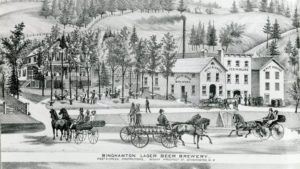
This 1866 engraving shows the Binghamton Lager Beer Brewery. Photo Credit: Broome County Historical Society.
Shortly after the Civil War, the curative spring movement basically dried up and the area was converted into the Binghamton Lager Beer Brewery — one of several breweries that would last until Prohibition in the early 20th century. An 1866 engraving shows a highly romanticized view of a multiple building complex that smartly used the spring water for their products.
S. Mills Ely was a wholesale grocer who thrived in business in Binghamton. His stately home on the corner of Henry and Chenango streets would be greatly changed to become home to the Morning Sun newspaper (See NOTE No. 1 below). He purchased a large tract of land atop Mt. Prospect to build a summer home. He had lumber taken from a failed fundamentalist tabernacle (See NOTE No. 2 below). and had it reconstructed as Ely Tower which overlooked the entire river valley.
In 1907 and in declining health, Ely donated that tract of land to the City of Binghamton to be used for a park. For two years, the tower was a popular spot for residents to visit (See NOTE No. 3 below). In 1909, a windstorm took the tower to the ground, and the park would later be re-purposed for the Ely Park Golf Course.
Even before Ely gave the land for a public park, people would hike the pathways for outings atop Mt. Prospect. Picnickers, hikers and artists clambered to the top to rest, eat and use the magnificent views for inspiration. First Ward residents long remember the many steps through a concrete gateway to Ely Park as they lumbered up the hillside. But by the beginning of the 20th century, those days of ease were already numbered.
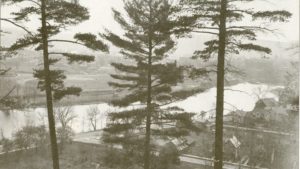
View from Mt. Prospect of Stow Flats in 1902. Photo Credit: Noyes Collection, Broome County Historical Society
By the 1950s, plans were set in motion to modernize our transportation. The era of the interstate highway ended much of that mountain’s history (See NOTE No. 4 below). The hill became the site for the reconstruction of Route 17, which for decades has meandered along the valley. By the early 1960s, homes were being demolished or moved to make way for the improved roadway.
The stairs to Ely Park were destroyed, and the former park was converted to be used solely as the golf course (See NOTE No. 5 below). Within a handful of years, the new moniker of Kamikaze Curve stuck as the number of accidents in that area quickly mounted. Today, you can call it Mt. Prospect, Prospect Mountain or Kamikaze Curve — but whatever it is called, that hill has led an ascendant role in our history.
ALL CREDIT for above Article to Gerald R. Smith and PressConnects.com
ALL CREDIT for Pictures to the Broome County Historical Society
NOTES respectfully submitted by Andy Reistetter:
NOTE No. 1: Per current Broome County Historian Roger Luther the home of S. Mills Ely was located at 85 Henry Street across from Carroll Street; currently where stands the new Post Office.
NOTE No. 2: “From a failed fundamentalist tabernacle,” is inaccurate. Per Tom Cawley’s Article entitled: “One Man’s Outlook: Ely Tower Symbol of Faith,” the Evangelist B. Fay Mills ‘tabernacle’ on Water Street was a hall that was built to be temporary.
“Mr. Ely was a very religious citizem. At the turn of the century, there was an Evangelist he admired a great deal, B. Fay Ely. There was built on Water Street a temporary hall, where Evangelist Ely preached nightly. Importer Ely attended with fervor, and when the series of sermons ended, he didn’t want to lose the building, even though it had to be torn down. So he bought the lumber and had it transformed into a tower…”
NOTE No. 3: The Ely Tower was a popular spot for residents to visit since its erection in 1893. in the article “Ely Tower Demolished” it was stated: “It was erected in 1893 by S. Mills Ely from the lumber which he bid off at auction which had been used in the great temporary building in which the B. Fay Mills evangelistic meetings were held in that city in 1892. The tower was put up as a memorial to these meetings and thousands of people ascended it each year to get the view.”
NOTE No. 4: The history of Mount Prospect continues to this day as people grow up there, learn to play golf, and make their contributions to society throughout the world…
NOTE No. 5: I believe that the land donated by S. Mills Ely exceeded what is currently used for Ely Park Golf Course and includes parkland for picnics and a tennis/basketball in addition to wooded areas being retained in their natural state.
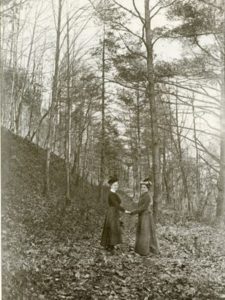
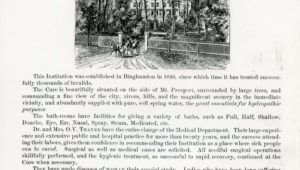
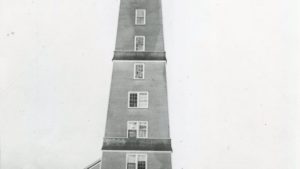


Recent Comments